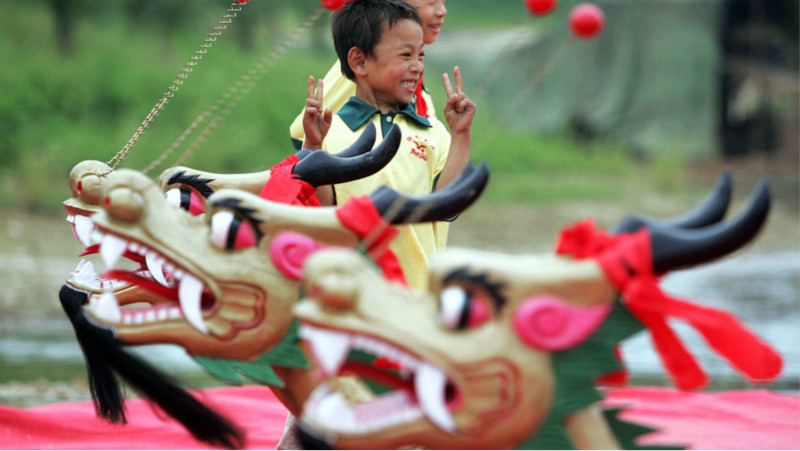Miluo offers special treat for culture lovers on Dragon Boat Festival

Miluo has a special place in China’s Dragon Boat Festival celebrations. The city in Hunan Province is where the ancient Chinese poet Qu Yuan (340-278 B.C.) ended his life.
Since the festival commemorates the great poet’s life, Miluo is considered home of the event and base for dragon boats. It was even included on the UNESCO World Heritage List in 2009.
Miluo has a whole set of customs for the festival, including eating zongzi (pyramid-shaped dumplings made of glutinous rice and reed leaves), dragon-boat racing and dragon-head sculpting.
Revelers can also take part in events along the Miluo River, where Qu drowned himself.
For the festival, Quzi (also known as Quyuan) Memorial Temple hosts a grand celebration, which traces its roots back to 278 B.C.
The temple sits atop Yusi Mountain in northwest Miluo, and Qu Yuan lived there for a while during his exile.
The temple celebration comprises royal rituals from the Qing Dynasty (1644-1911), and ancient music and sacrificial items are showcased to give visitors a taste of what it was like in the past.
The celebration was put on the provincial intangible cultural heritage list by the Hunan government in 2009.
Separately, a pavilion, a cave and a bridge that are believed to bear Qu Yuan’s footprints are all within walking distance of the temple.
A forest with more than 350 calligraphy and painting tablets in honor of Qu Yuan covers an area of 16,000 square meters to the east of the temple.
Miluo’s dragon boat competition is a must-see. This year, a large-scale modern drama “Qu Yuan” will be launched during the festival. The show explores innovation, integration of Chinese history and stage art and showcases the poetic and romantic elements of “Li Sao” (The Sorrow of Parting), one of the most influential of Qu Yuan’s works.
For those who seek more varied experiences, the ancient towns and villages in Miluo may be of interest.
In 2016, the local government spent 5 billion yuan (724.6 million U.S. dollars) to develop a 20-kilometer-long corridor, which connects several idyllic towns featuring wetlands, old tombs and folk culture. One can walk on old stone streets and sip sweet wine at Changle Town, tour a botanical garden, visit a culture park and ancient business blocks at China poetry town or experience ancient architecture at Xinshi ancient town.
Source: China Daily Update: 10 June, 20119











